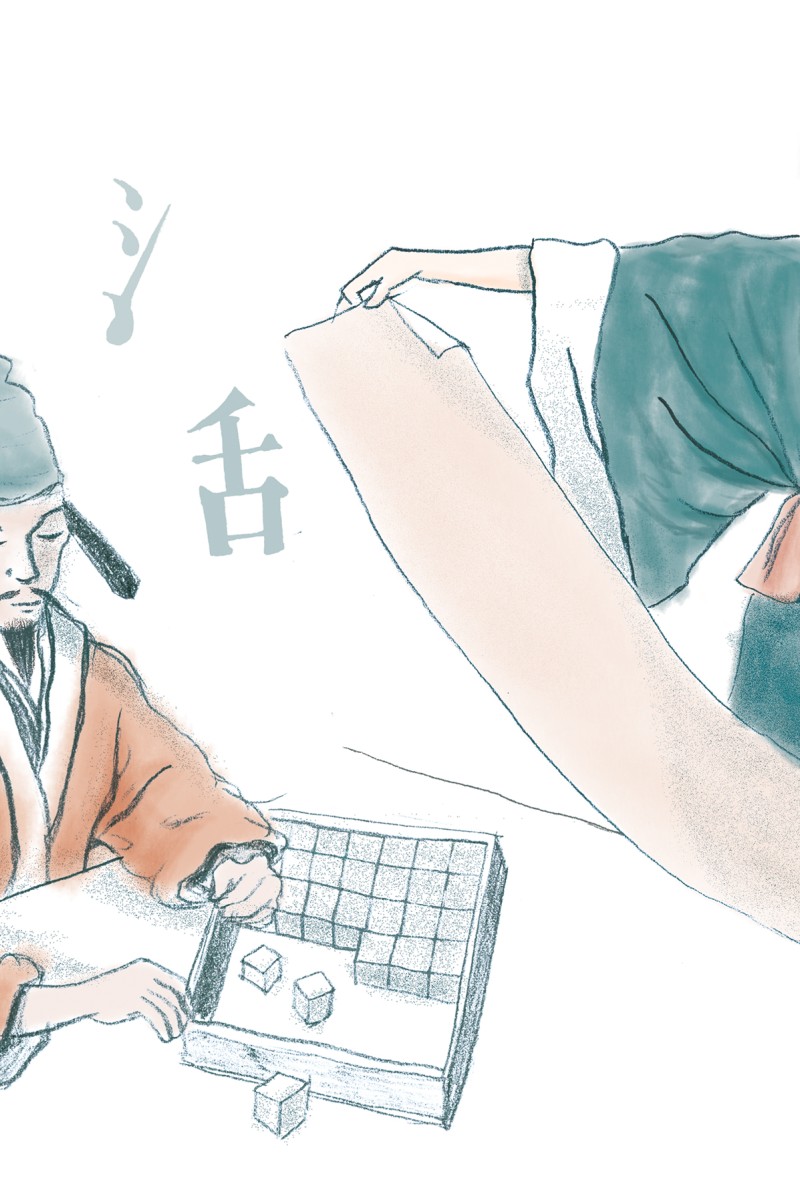
Imagine a world without words printed on paper. It's impossible, isn't it? It all started in China

Bi Sheng (990-1051 AD)
Artisan, inventor of moveable type printing, man of mystery
Not much is known about the life of Bi Sheng, a common artisan who was born in China around 990AD during the Northern Song Dynasty. But thanks to Chinese scholar Shen Kuo's writings, we know what Bi invented.
Up to that time in China, paper was printed using large woodblocks, with ink applied to the raised carved surface of the block. This allowed multiple copies of text to be made cheaply by pressing paper onto the inked blocks.
But the process of carving each block was time-consuming and difficult.
Some time between 1041 and 1048AD, Bi invented a technique for printing with moveable type, using porcelain to create single Chinese characters.
He first created 3,000 of the most commonly used characters, which he stored in wooden cases. They were arranged according to pronunciation to make it easy to find the right one.
When it was time to print, the necessary characters were arranged on an iron board, and ink, then paper, was applied. While one board was being used for printing, another was being prepared for the next page, making the process very speedy. And of course, all the characters could be reused.
Over the years, this technique was refined and, by 1490, sturdier type was being made out of bronze. But because the Chinese alphabet comprised thousands of characters, it was still cheaper to print by the old woodblock system. Bi's landmark invention did not come into its own until it reached Europe. There, in 1540, Johannes Gutenberg began using raised alphabet characters cast on moveable metal types.
The modern mass-printing machine was born, revolutionising the communication of ideas, and creating the Renaissance, the Enlightenment and our modern world.
Cai Lun (62-121 AD)
Eunuch, inventor of paper, court officer and palace plotter
Cai Lun was born around AD62 during the Eastern Han dynasty. He became a court eunuch under Emperor He and rose rapidly through the ranks until, in AD89, he was put in charge of making instruments and weapons.
By this time, a primitive type of paper made from hemp already existed in China, but it was of very poor quality and not widely used. Most official writing was recorded on bamboo tablets (which were heavy) or on pieces of silk (which were very expensive).
In AD105, Cai started experimenting with a new method of paper production, soaking fibres in water, then draining and drying them into thin, matted sheets. The fibre included hemp, tree bark, rags and even fishing nets. The paper it made was light, thin, strong and inexpensive, and could be mass-produced. The emperor showered Cai with praise, gifts and a title, and his method quickly became widespread in China.
However, he could not resist the lure of palace politics, and became involved in a plot to kill the Empress Dou's romantic rival, Consort Song. Sixteen years later, when the consort's grandson took the throne, Cai was ordered to report to prison. Instead, he took a bath, dressed in his best silk robes, and took his own life.
But his invention lived on, and by the third century, it allowed literature and literacy to spread rapidly throughout China. By the seventh century, it had reached Korea, Japan and Vietnam; by the eight century, after some Chinese paper makers were captured in battle, it reached the Arab world; and by the 12th century, it finally arrived in Europe, making possible the foundation of the great Scholastic Age.
For his remarkable invention, which was crucial to the development of civilisation, Cai has been ranked as the seventh most influential person in history, ahead of Aristotle, Einstein and Galileo.
Sarah Brennan is the author of the best-selling Chinese Calendar Talesand Dirty Story series. Check out www.sarah-brennan.com